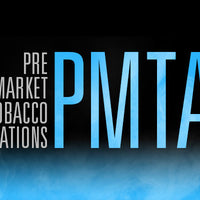In the first part of this series, we broke down some of the findings of Public Health England’s Evidence-Based Review on electronic cigarettes. In this article, we will take a closer look at the nicotine studies reviewed in PHE’s review. For this report, Public Health England used the U.S. National Library of Medicine to review studies of nicotine content, emissions and delivery in electronic cigarettes in an effort to determine any health risks that may be associated with the use of nicotine in e-cigs.
PHE’s Evidence Review of Nicotine Content, Emissions and Delivery

Public Health England found 161 records of nicotine studies to review for the evidence-based review on electronic cigarettes. Out of the 161 records found, 112 were excluded from the review, as they did not contain relevant information. After reviewing the remaining 49 records, PHE found that 25 of the studies provided data of nicotine content in ambient air, e-liquid and vapor, and 16 studies provided data regarding nicotine delivery via e-cigs compared to tobacco, while the remaining 8 records again did not contain relevant information. This left a total of 41 legitimate studies to be reviewed for the report regarding the content, emissions and delivery of nicotine via e-cigs.
Studies of Nicotine Content in E-Cigs
According to the report’s summary regarding the safety of e-cigs in terms of nicotine content, the accuracy of labeling nicotine content currently raises no major concerns, while the majority of poorly labeled e-liquid mostly contained less nicotine than declared. As for the risk of nicotine poisoning through e-liquid, the report concluded that, “an overenthusiastic vaper, like someone who is over-smoking, receives a reliable warning via nausea.” The report when on to state that even if someone accidentally drank a 10ml bottle of e-liquid, “it would cause nausea and vomiting but would be unlikely to inflict serious harm.” With these findings, the report determined that, when used as intended, e-cigs pose no risk of nicotine poisoning to users; however, all e-liquids must be contained in childproof packaging to prevent accidental nicotine poisoning.
Related: Nicotine in Tobacco vs. Nicotine in E-Cigs
Studies of Nicotine Emissions via E-Cig Vapor

As for the emission of nicotine through e-liquid vapor, PHE’s review of 4 studies concluded that vapor contained eight times less nicotine than tobacco smoke. They also reviewed a study that measured nicotine residue on surfaces in the households of smokers compared to the households of vapers. This study found negligible levels of nicotine residue in the households of vapers and determined these levels to be 169 times lower than the levels found in the households of smokers. With these findings, PHE concluded that e-cigs “release negligible levels of nicotine into ambient air with no identified health risks to bystanders.”
Studies of Nicotine Delivery via E-Cigs
After reviewing studies pertaining to the delivery of nicotine via vaping devices, PHE found many of the methods used to test the nicotine delivery of e-cigs may not correspond well, or even at all, with the behavior of vapers in general–especially with the way individual e-cig devices are used. The vaping habits of e-cig users vary greatly based on the duration and frequency of puffs, while the mechanical characteristics of e-cigs also play a major role in determining the delivery of nicotine. In reviewing another study, PHE’s report revealed that the actual nicotine concentration in e-liquid had almost no relationship with the amount of nicotine delivered through puffing machines. As a result, PHE has determined puffing machines to be an invalid method for testing the delivery of nicotine via electronic cigarettes.

PHE also found issues with other studies that assessed nicotine intake via blood samples from vapers before and after vaping. These studies used prescribed puffing regimes that were “sometimes derived from observations of smokers, rater than vapers.” After reviewing the evidence, PHE determined that these puffing schedules do not accurately correspond with the behaviors of vapers and were therefore unlikely to provide realistic data on nicotine delivery. Despite such limitations, blood sample studies did provide some useful information on the nicotine intake of vapers over time and how it compares with nicotine intake via traditional cigarettes. These findings specified that “the use of cig-a-likes can increase blood nicotine levels by around 5ng/ml within five minutes of use, which is comparable to delivery from oral NRT (nicotine replacement therapy); while experienced e-cig users using tank systems can achieve much higher blood nicotine levels over a longer duration, similar to those associated with smoking.” With this information, PHE concluded that the speed of nicotine absorption via e-cigs is generally slower than cigarettes but is faster than nicotine absorption from nicotine replacement therapies.
What Did PHE’s Evidence Review Reveal?
In the final conclusion of Public Health England’s Evidence-Based Review, it was determined that many of the studies reviewed were based on misinterpreted research. As a result, misinterpreted information coupled with sensationalist media coverage has led the public to the altered view of e-cigs being more harmful than they really are. While they cannot claim e-cigs are 100% safe, the fact that most of the chemicals that cause smoke-related diseases are absent in e-cigs and the chemicals that are present pose limited danger has resulted in PHE’s conclusion that e-cigs are 95% safer than smoking and have the potential to help smokers kick the habit for good.
How Will PHE’s Review Affect the Vaping Industry in the US?

Vapers in the U.K. are most likely breathing sighs of relief now that Public Health England has made the official statement that e-cigs are much safer than smoking and could one day be prescribed as a successful alternative to combusted tobacco. So now the question remains: when will the United States jump on board? According to a recent article published by Forbes, it is questionable why “public health agencies and anti-smoking organizations in the United States, unlike their counterparts in the U.K., are strangely reluctant to acknowledge these points, implausibly portraying e-cigarettes as a threat rather than an opportunity.” Hopefully, Public Health England’s Evidence-Based Review will help change the negative view points of electronic cigarettes in the United States, especially considering how similar the smoking rates and tobacco harm reduction policies are between the two countries. In the final piece to this article, we will look into these similarities and will present White Cloud’s perspective of how PHE’s findings could affect the vaping industry in the United States in terms of the FDA’s Deeming Regulations.






